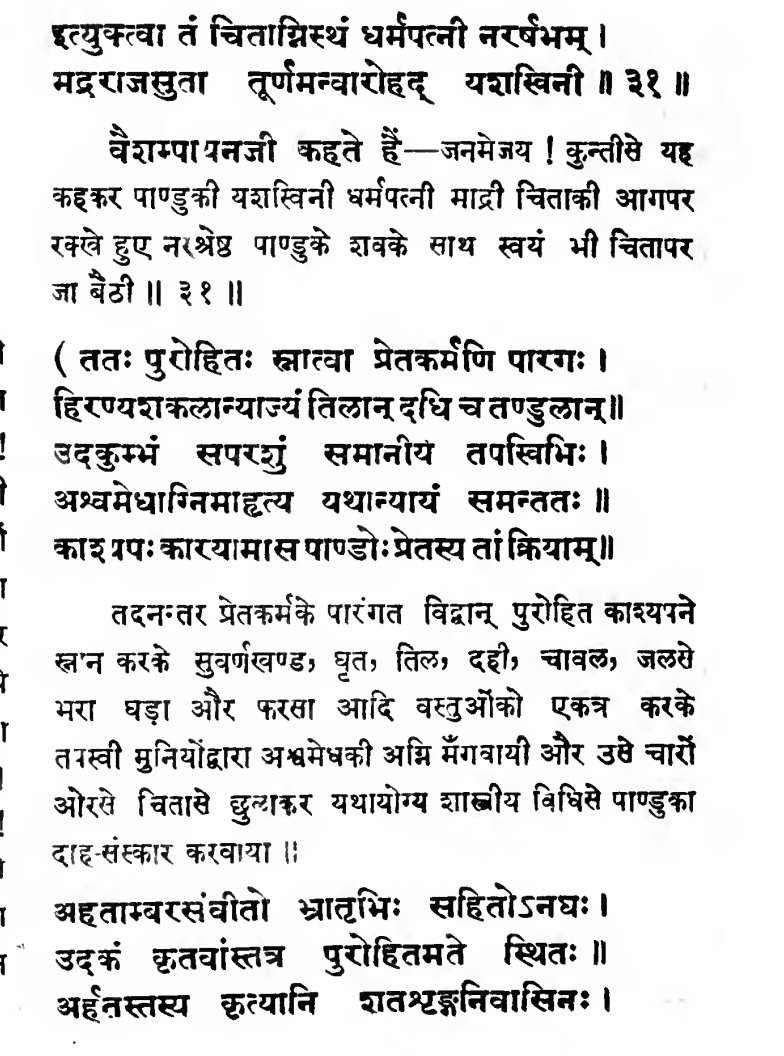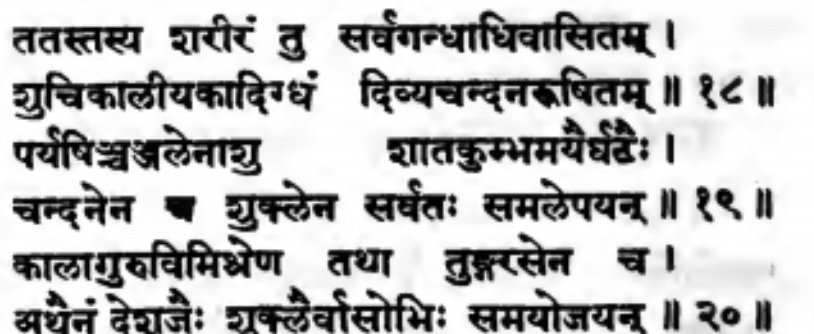Sati Pratha (Thread)
Hinduism is targeted by many who claim that Sati was an important part of Hinduism and it was forced upon women, they try to show that sati was very common practice. But is it true? Let& #39;s see
Hinduism is targeted by many who claim that Sati was an important part of Hinduism and it was forced upon women, they try to show that sati was very common practice. But is it true? Let& #39;s see
Vedas do not mention Sati anywhere, nor does Brahmanas, Aryanakas, Griha sutras. Griha Sutras do have many rituals and Samaskaras but the ancient texts do not mention Sati Pratha anywhere.
Even Manusmriti which have so many Interpolations do not mention Sati Pratha anywhere
Even Manusmriti which have so many Interpolations do not mention Sati Pratha anywhere
Rishi Manu said
धर्मं जिज्ञासमानानां प्रमाणं परमं श्रुतिः (2.13)
meaning those who want to know Dharma shruti texts are foremost Evidence for them.( source of knowledge)
He also said -
वेदोऽखिलो धर्ममूलं (2.6)
Vedas are source of "ALL" Dharma.
धर्मं जिज्ञासमानानां प्रमाणं परमं श्रुतिः (2.13)
meaning those who want to know Dharma shruti texts are foremost Evidence for them.( source of knowledge)
He also said -
वेदोऽखिलो धर्ममूलं (2.6)
Vedas are source of "ALL" Dharma.
Hence as Sati is not mentioned anywhere in Vedas etc, how can we call it an "Integral part" of Dharma? Of course it is a later practice.
But what about some texts where it is mentioned? Let& #39;s see-
But what about some texts where it is mentioned? Let& #39;s see-
Most famous mention of Sati is in Mahabharata Story of Madri, but the story is very strange. Let me show how.
But then in very next chapter it is written that Rishis went to hand over Kunti, Pandavas and "Two dead bodies" (शरीरे), but dah sanskara was done how they had two dead bodies? Can it be अस्थियां? Let& #39;s see
In next chapter Dhrishtra says - "Cover Madri in such a way that neither sun nor air can see her(come in contact with her)"
Further it says they all went to do Dah sanskara of Pandu, but 2 chapters ago it said Dah sanskara already happened, antim sanskara do not happen twice.
Further it is mentioned that body of Pandu was covered with Sandalwood paste and covered in white clothes, and he was looking as if alive.
Clearly they are talking about ded bodies.
Clearly they are talking about ded bodies.
It is clear contradiction, if Madri ascended Pandu& #39;s Pyre and Antim sanskara was done there and then how come their dead bodies were carried and how they were covered etc?
This means this part has been interpolated later, I believe Sati of Madri was not part of original Mahabharata but added later removing some original shlokas and this is based on my above analysis.
Even in texts like Parashar Smriti where Sati is mentioned, Sati is one of the options and it is clearly Interpolated, Even modern day scholars believe that it is interpolation as just a verse above women are allowed to remarry.
Medhatithi in his commentary on Manusmriti 5.157 says killing self is against shastras(vedas) hence Sati is prohibited even when it is mentioned in Smriti texts like Angirasmriti.
And rightly so, because Yajurveda 40.3 prohibits suicide.
असुर्या नाम ते लोका अन्धेन तमसावृताः । ताँस्ते प्रेत्यापि गच्छन्ति ये के चात्महनो जनाः ।।
असुर्या नाम ते लोका अन्धेन तमसावृताः । ताँस्ते प्रेत्यापि गच्छन्ति ये के चात्महनो जनाः ।।
But even if someone believes that these are not Interpolations (although enough evidence provided) still they have no basis to attack Hinduism as it& #39;s one of the options as mentioned in Paradhar smriti and not a compulsion
Even when British arrived Sati was not Prevalent in society, in Poona dominion of Peshwa annual average was 12 for 1800-1812, Sati pratha was practiced mostly in Bengal and see that in comparison to Population at that time.
Hence targeting Hinduism in name of Sati is wrong because ancient texts do not mentionSati at and some texts which mention it are interpolated later as they do not fit in context.
Sati is NOT a part of Hinduism and is a later practice.
नमो नारायणाय।।
Sati is NOT a part of Hinduism and is a later practice.
नमो नारायणाय।।

 Read on Twitter
Read on Twitter












